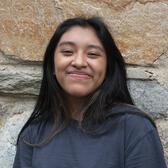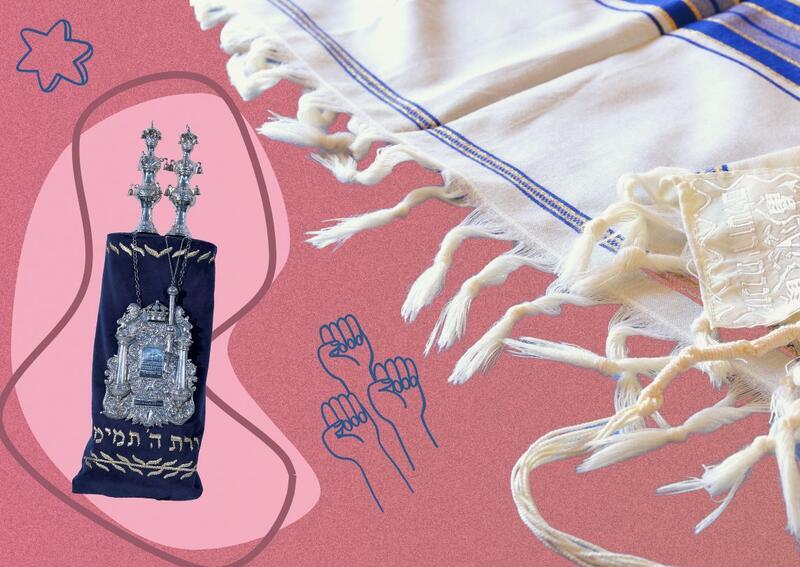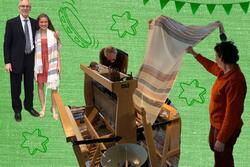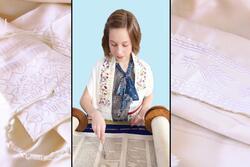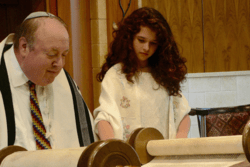With My Tallit, Becoming a Jewish Woman
Before my Bat Mitzvah, I’d never felt like being a Jewish woman was a good thing. A Bat Mitzvah, or Bar Mitzvah, is a Jewish coming-of-age ritual where, typically, a twelve or thirteen year old will be assigned a passage to chant from the Torah. The purpose is to mark a time in our life, where we pause at the doorway to adulthood and start a new chapter, a new responsibility. I’d spent years learning about the Torah and its stories, but I’d never read a tale where a woman was given a strong narrative. This point soon became my inspiration to showcase the women of the Torah through a Jewish rite of passage. Having my own tallit made me feel like I was finally a part of a community that had never before fully highlighted the intersections of my being a woman and Jewish.
In the Torah, women are often married off or cast away; they are treated like a form of currency. Two goats and one cow in exchange for a woman. That was the worth I felt women were assigned. All of the stories in the Torah are about men, and how they question God and triumph over their situation: they save animals from a worldwide flood, they save the Jewish people and part an ocean, or they wrestle an angel and win. But I’d never heard of any women who are written in the heroic tone that’s given to the men. For instance, Esther saves the Jewish people, but her story was not from the five books of the Torah and she had to marry a man to save the people.
Then I began to prepare for my Bat Mitzvah, an occasion I’d been waiting for since I was little. I knew the tunes from my Jewish day school and I knew how to read and speak Hebrew (rather brokenly and with confusing conjugation, but my Israeli friends assured me I was able to get my point across). This significant Jewish event emphasized that I was preparing to be an adult; it was also truly the first time where I felt that I could be both Jewish and a woman. I was surrounded by women who were in charge of preparing me for the ceremony, and I saw how special it felt to be acknowledged as a Jewish woman by other Jewish women. It was the first time that I felt I was worth more than two goats and one cow in the Jewish community—a low bar, but exciting for a thirteen year old—and that I was valued for my insight as a woman as well. I’d never been made to feel less than because of how I identify, but one’s self-worth can erode when the holiest book in one’s religion has an exchange system that puts a rather low value on a human life.
There's a point of tension for me in both being valued in the Jewish community and being devalued by the Torah’s discussion and treatment of women. I had amazing experiences when I was little and took part in Jewish holidays and prayer, but my Bat Mitzvah and owning my own tallit reminded me that I'm valued twice. I was assigned a Torah chapter that highlighted the strength and importance of women, a perfect coincidence, and I worked to write a speech about kindness. My parasha was Chayei Sarah (the life of Sarah), and it’s one that highlights strength, kindness, legacy, and leadership. Learning about this story, one that showcases Sarah's kindness and hospitality, was a turning point in my view of Judaism because it explored the humanity that women are not often granted.
Sarah is, in addition to the central figure in my parasha, one of the four matriarchs whose name is on my tallit. My tallit is made of a soft cream-colored fabric, with gold and silver embellishments in the shapes of trees and birds; and on each of the four corners of my tallit is the name of a Jewish matriarch: Sarah, Rebekah, Leah, and Rachel. Through my tallit, I wanted to honor and emphasize the women in the Torah. I wanted them to be with me on my Bat Mitzvah, supporting me as I chanted my passage and gave my speech. I wanted them to be laughing and crying with me.
In this way, my tallit reminds me of the day that I became a Jewish woman. I remember the moment that I put it on for the first time; and I still have my tallit with me today. I’d used communal ones at school before, but I'd never had my own until I was in front of all of the people I invited to my service. I said the prayer before wrapping the tallit around myself and, like all of my classmates, family members, and Jewish people before me, I kissed the tallit and pulled it across my back and shoulders. I was finally a Jewish adult, respected for the insight that I brought to the religion and for my insight as a woman. My tallit connected me to a group of people that I’d felt ostracized from for years of my life. And I know that the next time I wrap my tallit around my shoulders, I will feel right at home again, honoring the women who came before me and the people of my community.
This piece was written as part of JWA’s Rising Voices Fellowship.

